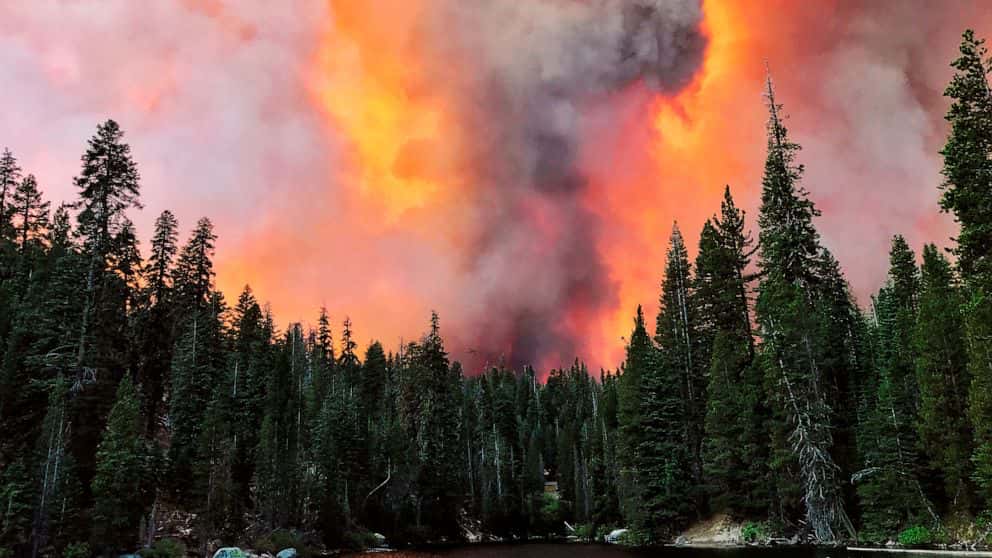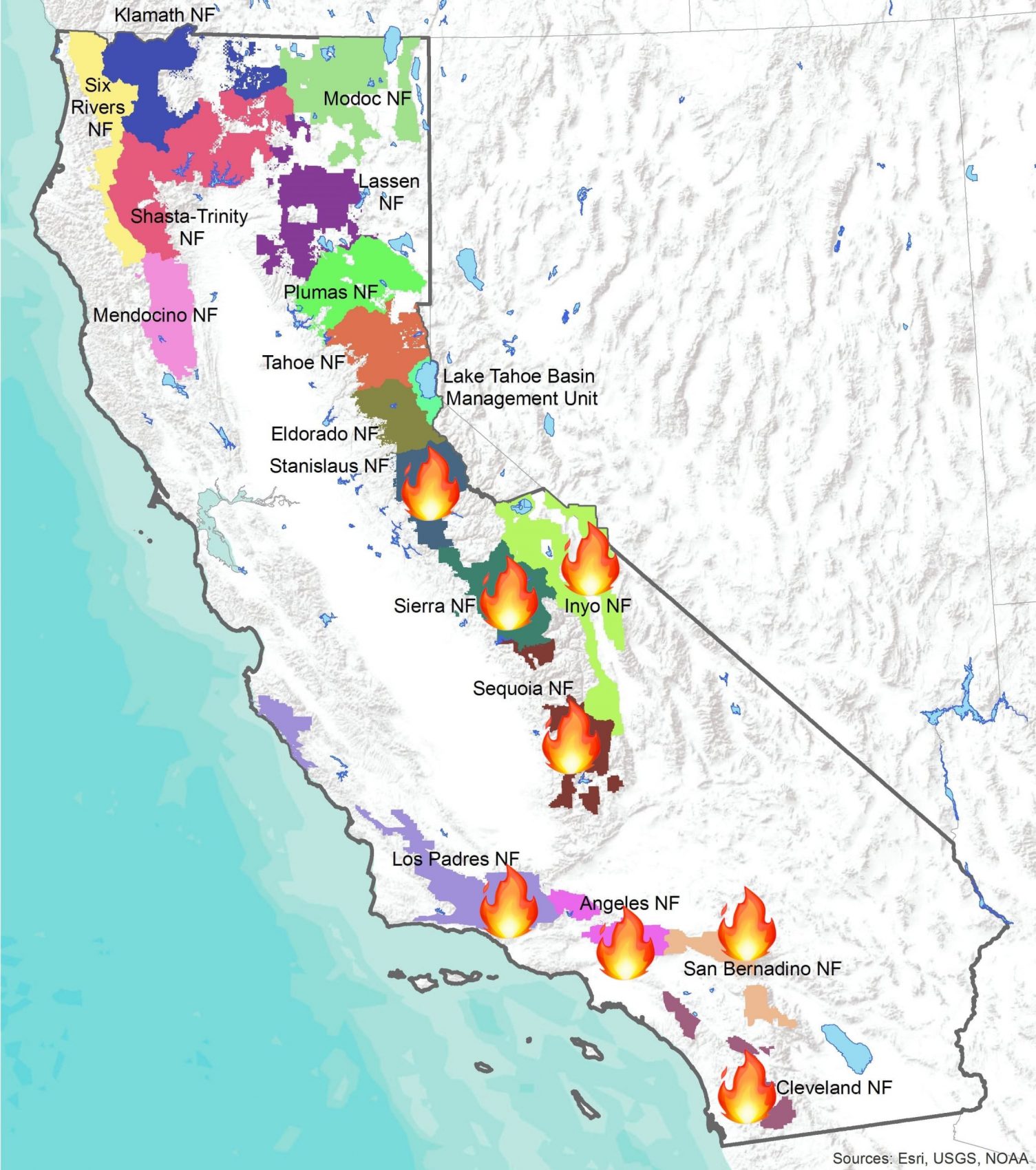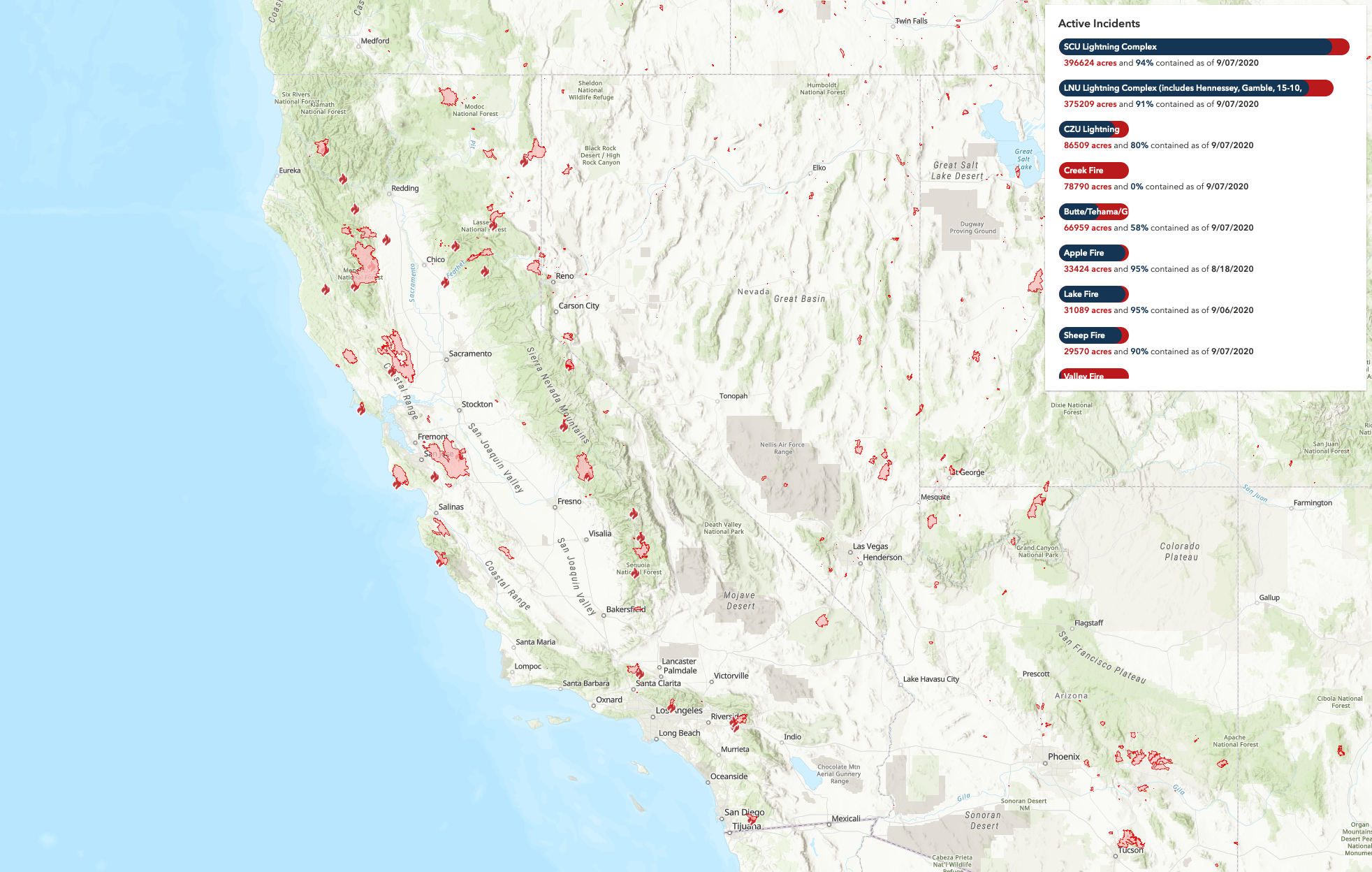
From 5 pm yesterday evening, a number of National Forests in Southern California were closed to the public by the USDA Forest Service Pacific Southwest Region, to provide for public safety and reduce the potential for human-caused wildfire starts. The closure will run through September 14th, according to Emergency Forest Closure Order 20-07.
One of those forests is Inyo National Forest, home to Mammoth Mountain. Mammoth Mountain immediately suspended their summer operations in response and will remain closed until the order is lifted.
Full press release from USDA Forest Service Pacific Southwest Region below:
Most of California remains under the threat of unprecedented and dangerous fire conditions with a combination of extreme heat, significant wind events, dry conditions, and firefighting resources that are stretched to the limit. Due to these conditions, the USDA Forest Service Pacific Southwest Region is announcing the following temporary closures and fire restrictions to provide for public safety and reduce the potential for human-caused fire starts. They will go into effect at 5:00 pm Pacific Standard Time on Monday, September 7, 2020, and will be re-evaluated daily as conditions change.
-
- Closure of the following National Forests: Stanislaus National Forest, Sierra National Forest, Sequoia National Forest, Inyo National Forest, Los Padres National Forest, Angeles National Forest, San Bernardino National Forest, and Cleveland National Forest.
- Prohibition of the use of any ignition source on all National Forest System lands (campfires, gas stoves, etc.) throughout California.
- Closure of all developed campgrounds and day-use sites on National Forests in California.
“The wildfire situation throughout California is dangerous and must be taken seriously. Existing fires are displaying extreme fire behavior, new fire starts are likely, weather conditions are worsening, and we simply do not have enough resources to fully fight and contain every fire,” said Randy Moore, Regional Forester for the USDA Forest Service Pacific Southwest Region. “We are bringing every resource to bear nationally and internationally to fight these fires, but until conditions improve, and we are confident that National Forest visitors can recreate safely, the priority is always to protect the public and our firefighters. With these extreme conditions, these temporary actions will help us do both.”
An example of extreme fire behavior is the Creek Fire on the Sierra National Forest which began on Friday, Sep. 4th and grew rapidly on Saturday, Sep. 5th. The fire made a 15-mile run in a single day and burned 36,000 acres, prompting evacuations and life-saving measures. The California National Guard evacuated at least 200 people from Wagner Mammoth Pool Campground and assessed them for medical needs.
The Forest Service thanks our partners and the public for their cooperation and understanding of this monumental fire threat. It is critical that all Californians and national forest visitors follow these important closures and restrictions for their own safety and the safety of our firefighters.
The Forest Service manages 18 National Forests in the Pacific Southwest Region, which encompasses over 20 million acres across California, and assists forest landowners in California, Hawaii, and the U.S. Affiliated Pacific Islands. National forests supply 50 percent of the water in California and form the watershed of most major aqueducts and more than 2,400 reservoirs throughout the state. For more information, visit www.fs.usda.gov/R5.
The Forest Service will close all of its developed campground and day-use sites in California. The use of campfires, gas stoves and any other ignition source is now prohibited on all National Forest lands throughout the state.

A Facebook post by the Mammoth Times added some clarity to the exact areas and boundaries affected by the closures:
According to CalFire, this year, wildfires have now burned over 2 million acres. There have been 8 fatalities and more than 3,300 structures destroyed.
